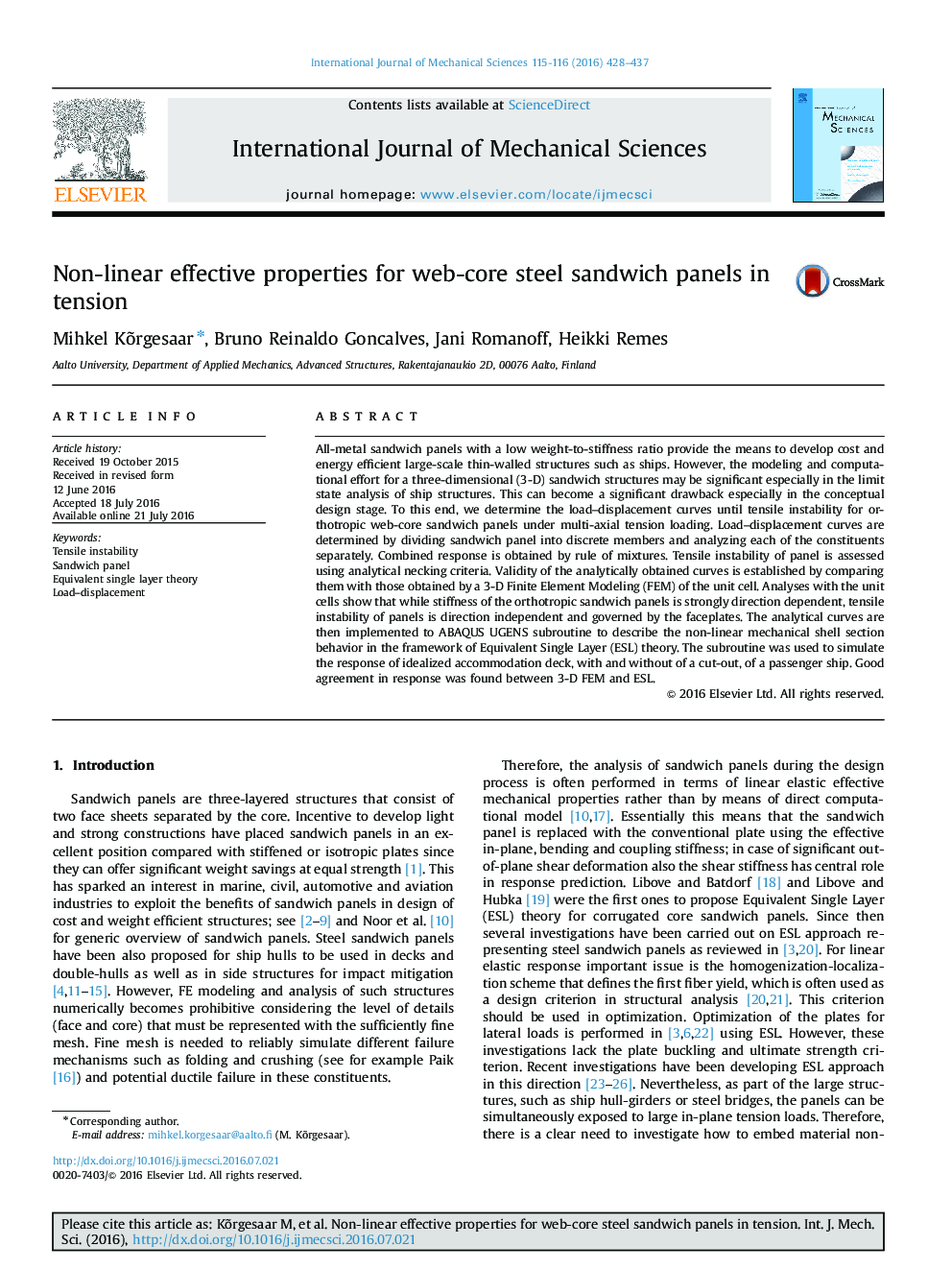| Article ID | Journal | Published Year | Pages | File Type |
|---|---|---|---|---|
| 779974 | International Journal of Mechanical Sciences | 2016 | 10 Pages |
Abstract
All-metal sandwich panels with a low weight-to-stiffness ratio provide the means to develop cost and energy efficient large-scale thin-walled structures such as ships. However, the modeling and computational effort for a three-dimensional (3-D) sandwich structures may be significant especially in the limit state analysis of ship structures. This can become a significant drawback especially in the conceptual design stage. To this end, we determine the load-displacement curves until tensile instability for orthotropic web-core sandwich panels under multi-axial tension loading. Load-displacement curves are determined by dividing sandwich panel into discrete members and analyzing each of the constituents separately. Combined response is obtained by rule of mixtures. Tensile instability of panel is assessed using analytical necking criteria. Validity of the analytically obtained curves is established by comparing them with those obtained by a 3-D Finite Element Modeling (FEM) of the unit cell. Analyses with the unit cells show that while stiffness of the orthotropic sandwich panels is strongly direction dependent, tensile instability of panels is direction independent and governed by the faceplates. The analytical curves are then implemented to ABAQUS UGENS subroutine to describe the non-linear mechanical shell section behavior in the framework of Equivalent Single Layer (ESL) theory. The subroutine was used to simulate the response of idealized accommodation deck, with and without of a cut-out, of a passenger ship. Good agreement in response was found between 3-D FEM and ESL.
Keywords
Related Topics
Physical Sciences and Engineering
Engineering
Mechanical Engineering
Authors
Mihkel Kõrgesaar, Bruno Reinaldo Goncalves, Jani Romanoff, Heikki Remes,
